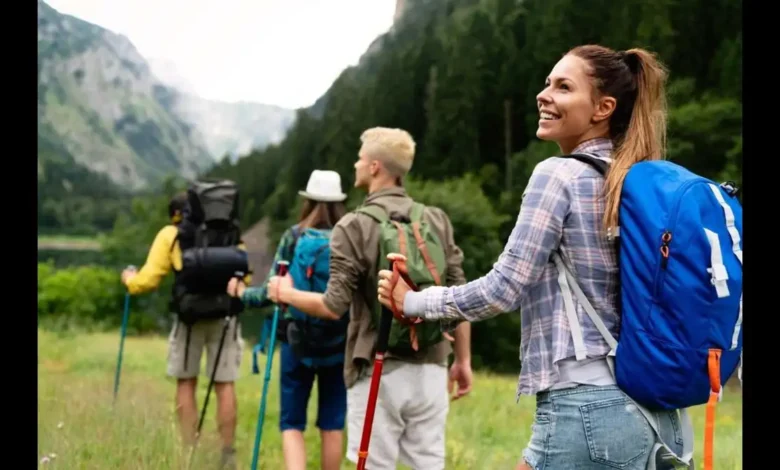Introduction to Bluefire Wilderness
The great outdoors has long been a sanctuary for healing, adventure, and self-discovery. Bluefire Wilderness stands out as a beacon in the outdoor therapy landscape, offering transformative experiences that leverage nature’s power to foster growth and resilience. However, recent events have cast a shadow over this reputation. A lawsuit has emerged, raising significant questions about practices within the organization and their impact on clients seeking help.
As news of the Bluefire Wilderness lawsuit circulates, many are left wondering: what does this mean for those who rely on such programs? In this article, we will delve into the details of what transpired at Bluefire Wilderness, explore critical issues raised by the lawsuit, and examine its implications not just for the organization but also for families navigating their therapeutic journeys through nature. Join us as we uncover the layers behind these pressing matters surrounding this well-known wilderness therapy program.
The Lawsuit: What Happened?
In recent months, Bluefire Wilderness has found itself at the centre of a high-profile lawsuit. The case emerged after several parents raised concerns about the safety protocols and therapeutic practices in place.
Allegations include claims of neglect and insufficient supervision during outdoor activities. These accusations have triggered an intense scrutiny of the organization’s operations.
As details unfolded, it became clear that some former clients felt their well-being was compromised. Parents voiced their fears regarding emotional trauma linked to specific experiences while attending programs.
Bluefire Wilderness responded promptly, asserting its commitment to maintaining a safe environment for all participants. However, the ripple effects are still being felt throughout the outdoor therapy community as stakeholders await further developments in this case.
Key Issues Raised in the Lawsuit

The Bluefire Wilderness lawsuit has brought several critical issues to light. Primarily, allegations of negligence surfaced regarding the safety protocols in place for clients.
Concerns about staff training and qualifications are also significant. Plaintiffs argue that personnel lacked adequate preparation to handle emergencies effectively.
Another critical issue revolves around the therapeutic practices employed by the organization. Critics question whether these methods align with industry standards and best practices for outdoor therapy.
Moreover, there are discussions surrounding informed consent. Families express worries about transparency in communication-related to treatment plans and the potential risks involved.
Additionally, emotional distress claims have emerged from this lawsuit, spotlighting the impact on families navigating their loved ones’ challenges while seeking help through Bluefire Wilderness. These issues collectively raise questions about accountability in the wilderness therapy sector.
Implications for the Outdoor Therapy Industry
The Bluefire Wilderness lawsuit has sent ripples through the outdoor therapy industry. As scrutiny increases, programs may need to reevaluate their practices and protocols. This case highlights the necessity for clear guidelines in wilderness therapy settings.
Transparency is now more critical than ever. Organizations must prioritize open communication with families about potential risks and therapeutic approaches. Clients deserve a thorough understanding of what they are entering into.
Moreover, compliance with legal standards will be under tighter observation. Programs that fail to adhere could face serious ramifications, not just legally but also in reputation.
This situation could lead to a shift in how outdoor therapy is perceived by both clients and professionals alike. Trust becomes paramount as providers strive to maintain credibility while navigating these challenges within an evolving landscape.
Impact on Clients and Families
The impact of the Bluefire Wilderness lawsuit on clients and families is significant. Parents often seek wilderness therapy programs with high hopes for their children’s recovery and growth. The uncertainty surrounding this legal case can create anxiety among families.
Many clients may feel confused or betrayed, especially if they have experienced a strong connection with the program. Trust is crucial in therapeutic settings, and any disruption can lead to feelings of insecurity.
For some families, this situation raises concerns about safety and transparency in outdoor therapy programs as a whole. They may question whether other facilities follow similar practices or have unresolved issues.
Moreover, ongoing litigation could delay treatment plans for current participants. Families might worry about interruptions in support services that are essential during challenging times. This ripple effect touches not just individuals but entire family systems seeking healing together.
Steps Taken by Bluefire Wilderness to Address the Lawsuit

In response to the lawsuit, Bluefire Wilderness has implemented a series of proactive measures. They initiated an internal review of their policies and practices to ensure compliance with industry standards.
Training sessions for staff have been intensified, focusing on safety protocols and ethical guidelines. This aims to enhance the therapeutic environment for all participants.
Bluefire also engaged external experts to assess their programs critically. These insights are vital in refining their approach and addressing any gaps that may exist.
Additionally, they established an open line of communication with families involved in the program. Transparency fosters trust and reassures clients about their commitment to improvement.
Regular updates regarding changes will be shared publicly as part of their accountability efforts. This demonstrates a willingness not just to respond but also to learn from this experience moving forward.
Conclusion
The Bluefire Wilderness lawsuit has stirred significant discussion in the outdoor therapy community.
It highlights essential conversations about safety and ethical practices within therapeutic programs. Families seeking help for their loved ones are now more informed than ever.
As this situation unfolds, many will watch closely to see how it impacts regulations and standards in the industry. The outcome could lead to changes that prioritize client welfare above all else.
For families considering outdoor therapy options, these developments serve as a reminder of the importance of thorough research and due diligence.
Staying informed is crucial when it comes to choosing a program that aligns with individual needs while ensuring safety and support are paramount.
FAQs
What is the Bluefire Wilderness lawsuit about?
The Bluefire Wilderness lawsuit centres around allegations of negligence and inadequate care provided during outdoor therapy programs. The case highlights significant concerns regarding safety standards and accountability in wilderness therapy settings.
Who filed the lawsuit against Bluefire Wilderness?
The lawsuit was filed by former clients and their families, who claimed they suffered harm due to the practices employed at Bluefire Wilderness. They argue that these practices did not meet industry standards.
How could this lawsuit impact other wilderness therapy programs?
This legal action could set a precedent for how similar programs operate. If findings from the case reveal systemic issues, it may prompt tighter regulations across the industry, affecting how services are delivered.
What steps has Bluefire Wilderness taken in response to the lawsuits?
Bluefire Wilderness has initiated several changes following the claims made against them. These include reviewing their safety protocols, increasing staff training, and enhancing client communication to ensure higher standards of care.
Will this affect current or future clients of Bluefire Wilderness?
Yes, potential clients might be more cautious when considering enrollment due to negative publicity surrounding the lawsuit. Current clients may also experience heightened anxiety as they navigate program changes aimed at improving safety measures.
Also read: C.W. Park USC Lawsuit








One thought on “The Bluefire Wilderness Lawsuit Key Issues and Implications”